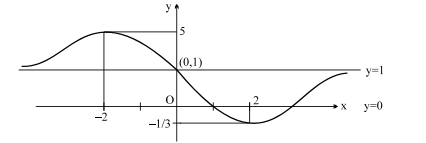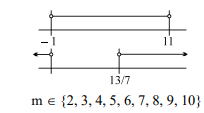Q.
Consider a rational function $f(x)=\frac{x^2-6 x+4}{x^2+2 x+4}$ and a quadratic function $g ( x )=(1+ m ) x ^2-2(1+3 m ) x -2(1+ m )$ where $m$ is a parameter.
If the range of the function $f(x)$ lies between the roots of $g(x)=0$ then the number of integral values of $m$ equals
Application of Derivatives
Solution:



